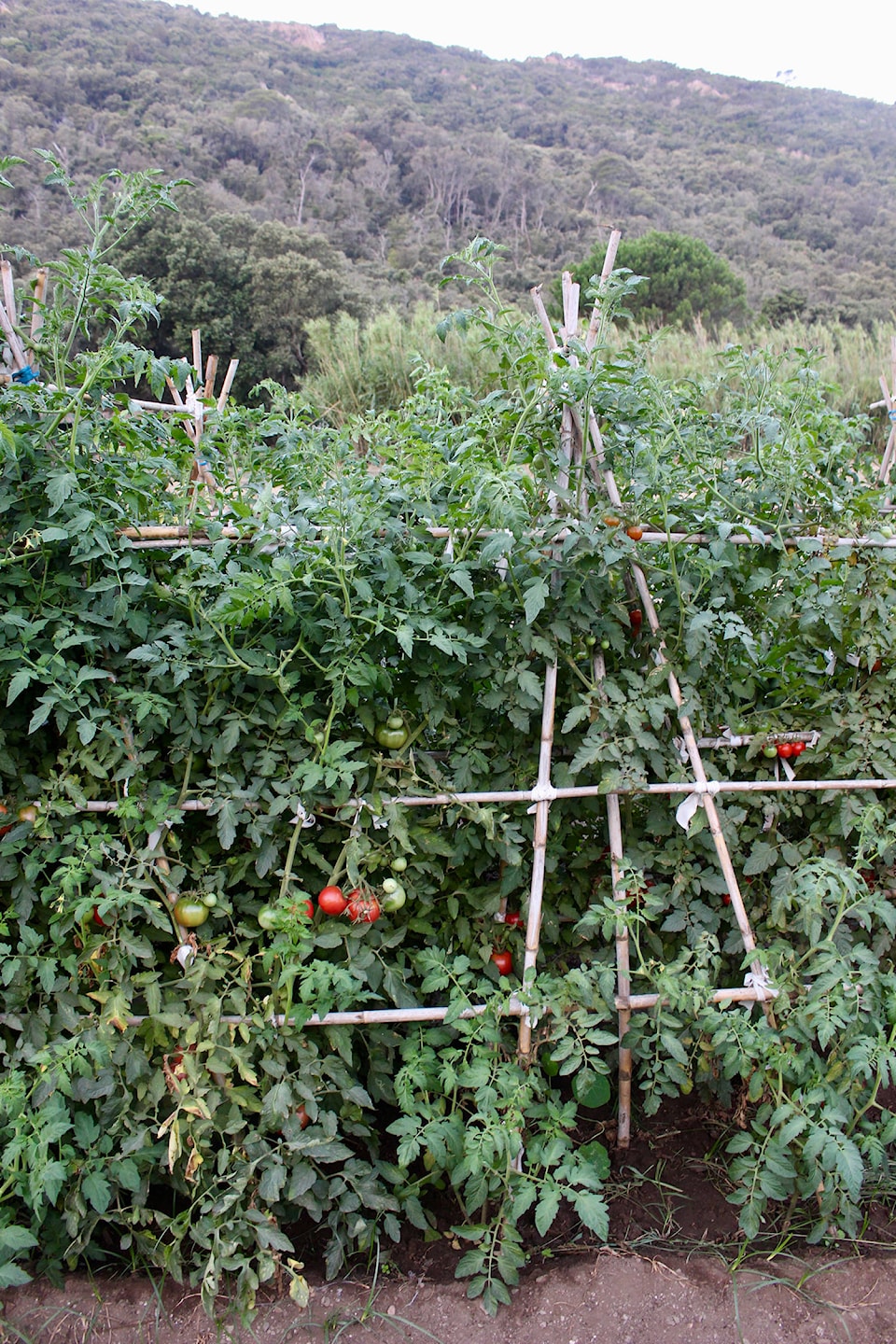Christin Geall
For the Saanich News
I recently returned from a short trip to the Côte d’Azur where fires raged in the hills of the Var and Luberon and where I, naïve and indulged, relaxed on the nearby island of Port Cros. But I wisened up when our flight from Toulon was cancelled due to smoke on our return journey: vast tracts of the native pine forest were alight. As Canadair planes flew overhead with bellies of Mediterranean seawater, I contemplated our dry summers and what lessons we might learn from Provence.
Hold on to what water you’ve got. Forget raised beds; they lose moisture too quickly. Instead, hill up the edges of your plantings, and create a barrier wall to prevent water from spilling away before it’s absorbed. In the baking sun, clay soils harden making them slow to absorb water. Making a ‘pool’ around plants gives parched earth time soak up water.
Use species adapted to drought. The ‘garrigue’ ecosystem of the French Mediterranean
contains aromatic plants that thrive in hot summers, including rosemary, myrtle, thyme, lavender and rock roses (Cistus spp.). If you have shallow soil, or rocky terrain that drains, try these tough plants.
Our native arbutus has a fine cousin growing in the ‘maquis’ or high shrub layer of many Mediterranean islands – the strawberry tree, Arbutus unedo. With bright edible fruits and evergreen leaves, it suits temperate urban gardens, being both smaller and tidier than our local Arbutus. It will also grow well in a large pot.
Consider the vertical layers of your garden. Forests teach us that every plant has it’s place – from the tallest trees, to shrubs, to herbaceous plants, to ferns, to the tiniest of mosses. Keep this structure in mind as you plan for the future. As our climate warms, the dappled light an established oak provides will become increasingly important. It’s anticipated that the loss of umbrella pines on the Côte d’Azur will have serious consequences for ecological restoration given they formed a canopy that shaded the soil and plants below. Please, no matter how ‘messy’: keep your trees. They’ll give you more options in the long-run.
In the vegetable patch, elevate your babies. In French ‘potagers’ or kitchen gardens, squash and cucumbers do not touch the ground. Heavy winter squashes are supported on wooden fruit crates, lighter fruits tied in to stakes or structures to keep hungry and thirsty critters away.
Trellis, train and tie-up: roses, grapes, wisteria, morning glories, honeysuckle, what have you … Again, shade is key. Create cool intimate spaces with arches of flowering vines or productive fruit-bearing plants such as grapes or kiwis.
Upon my return to Canada, I faced a heat wave and smoke-filled skies, almost precisely the weather I’d left in France. The reminder of how tenuous our hold on the future is—on a climate we can rely on, on expectations of normalcy as gardeners – hit me hard. My garden – in full roiling bloom, almost obscene in its opulence – struck me as anachronistic, to be filed one day in an archive labelled “The Age of Irrigation”.
Take heed.
Christin Geall teaches creative nonfiction at the University of Victoria and is an avid gardener.
